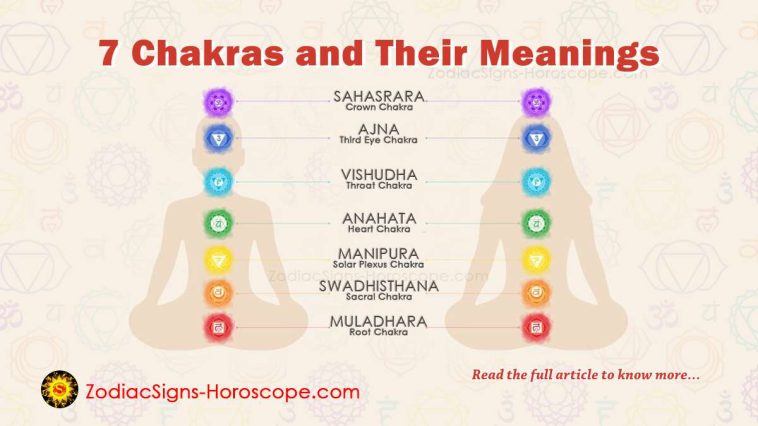Chakras Meanings, Mind, Body & Soul: A Beginner’s Guide
The Sanskrit word “chakras” (or “wheels”) refers to the seven vital energy centers in the body. Each center is located at a nerve plexus and associated with an organ. Positivity keeps this energy going around, while negativity hinders it. Although most North Americans are unfamiliar with chakras, they are widely utilized in various Eastern medical practices.
Let’s Learn About the 7 Charkas
Muladhara Chakra
The first chakra, Muladhara, concerns the set of nerves at the base of the spine. Also called the “root” chakra, this area is the bottom base of the body. It rules over the body’s excretory system as well as many of the adrenal glands. Oddly, it also influences our sense of smell.
In addition to governing physical energies, the root chakra also regulates the primordial inclinations within each of us. Each chakra is also associated with an element and color and has its unique mantra. The root chakra’s element is earth, its color is red, and its mantra is “Om”.
Swadhisthana Chakra
Moving up the body only slightly, the next chakra of the 7 chakras is located in the genitals. Swadhisthana, or sacrum, is the sacral chakra that governs the reproductive organs of our bodies, whether male or female, in addition to influencing our sense of taste. This area’s element is water, even though its color is orange. With the mantra, “vam”, the sacram allows us to access our fiery creativity.
Manipura Chakra
Manipura, or solar plexus, sits at our navel area, appropriately reigning over the organs in the abdominal cavity. Less obviously, it is linked with our sense of sight. On an emotional level, Manipura controls our willpower and overall sense of personal identity, meaning that an ideal time to call upon it is when we wish to connect with our subconscious emotions and desires – Freud would refer to this as the “ego”. The solar plexus is paired with the element of fire and the color yellow, with a mantra of “ram”.
Anahata Chakra
The collective name for the nerves encircling the heart is Anahata. This chakra governs the three most important physiological organs: the heart, lungs, and thymus. It also deals with our sense of touch. Anahata fittingly appeals to our emotions as the seat of love and compassion. With the element of air, a peaceful green color, and a “yam” mantra, we can use this energy to access and be open to love.
Vishudha Chakra
Continuing up the body, the next energy center is located in the pharynx region. Vishudha regulates our thyroid and hearing, thereby facilitating our oral communication on an emotional level. This chakra is associated with the ether element and has a blue aura around it. The throat’s mantra is “ham”, which helps us communicate creatively.
Ajna Chakra
Our third eye, Ajna, is located between our eyebrows in the middle of our forehead, just above the larynx. This symbolic third eye governs our crucial pituitary gland and the spiritual sixth sense – that of the evolved mind. Here, our intuition is controlled.
Ajna goes beyond the basic physical senses and allows us to connect with our primal and celestial sides. Our third eye is concerned with time, the color indigo, and perpetuates the mantra, “aum”.
Sahasrara: The Final Chakra of the 7 Chakras
The final chakra area sits at the top of the head. Sahasrara, or the crown chakra, influences the body’s pineal gland. Its focus extends far beyond the realm of the senses, concentrating on the divinity around us and the enlightenment we seek. It is associated with the abstract element of space and is shown as having a violet color.
Instead of a vocal mantra, Sahasrara meditation utilizes silence so that the practitioner can gain access to a more tranquil world. Here, we are separated from the chaos and trivial nature of our everyday lives and instead face the bigger picture – that of eternity.


